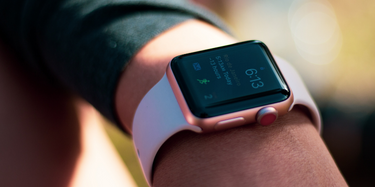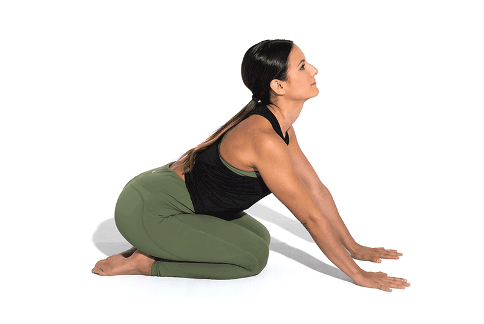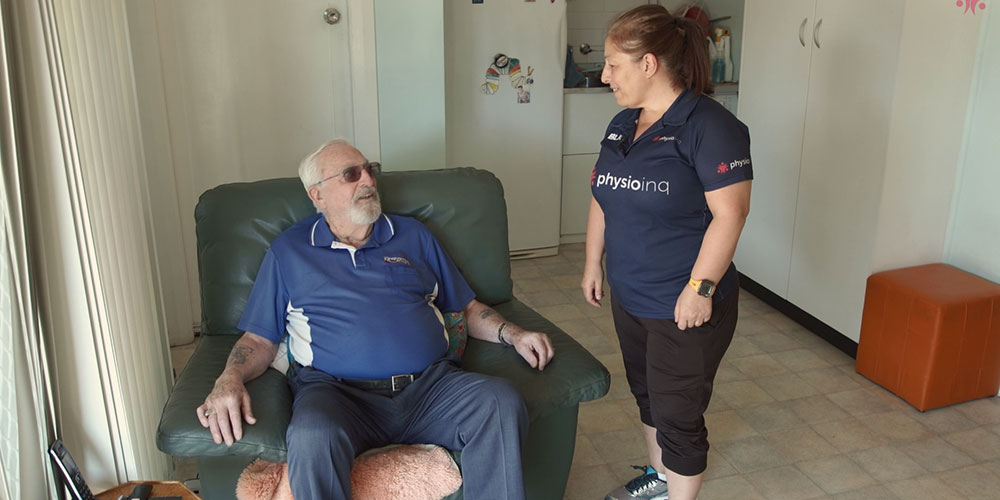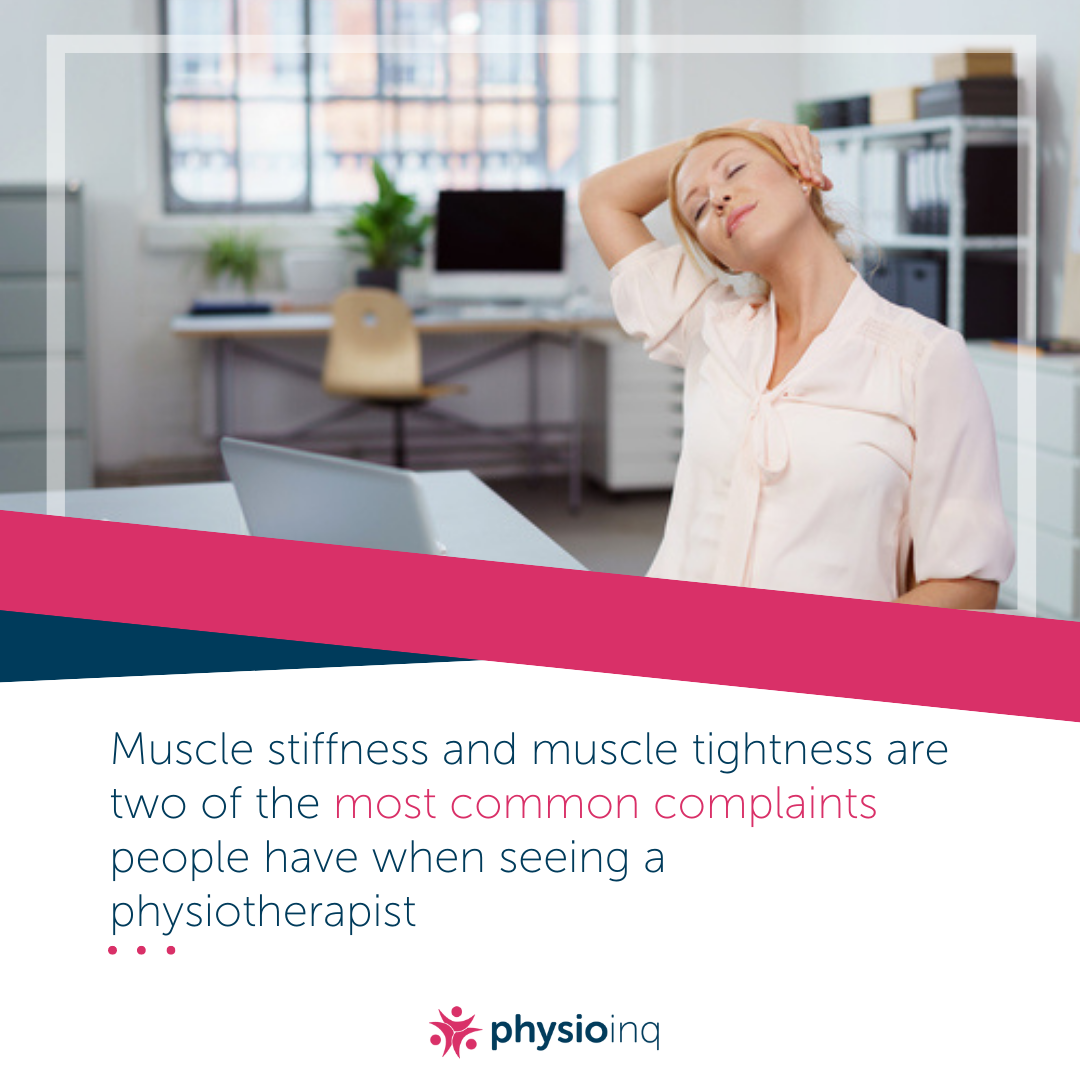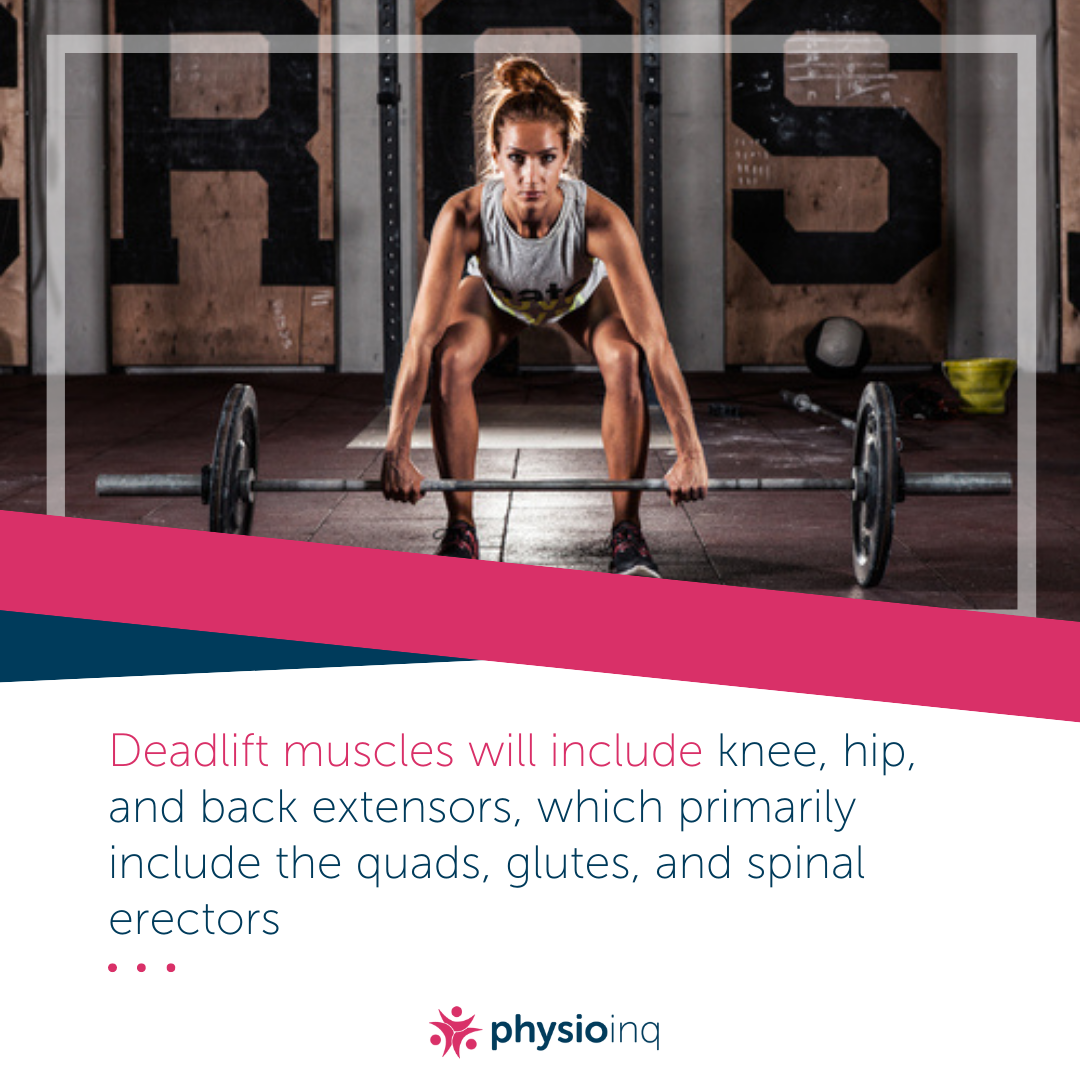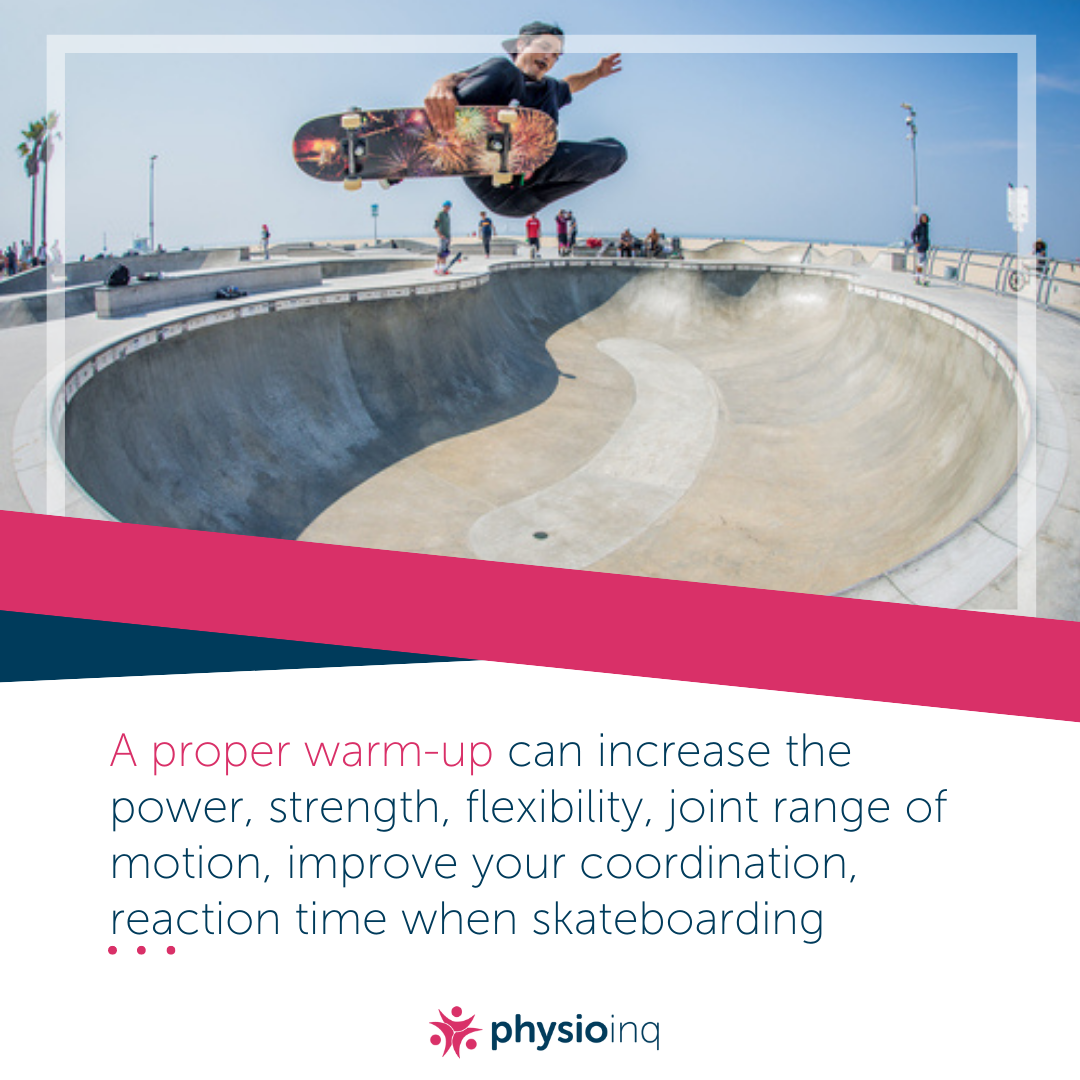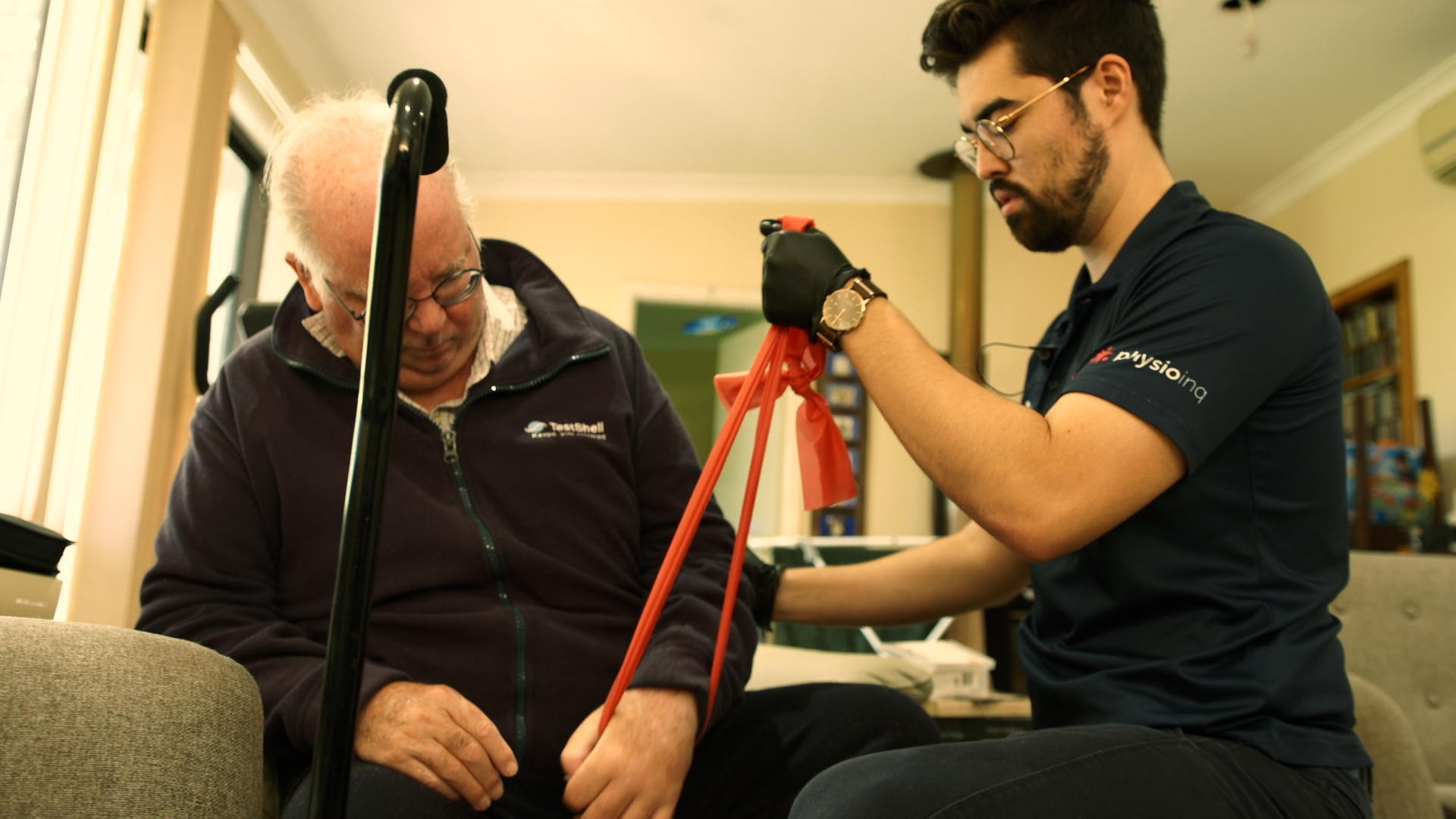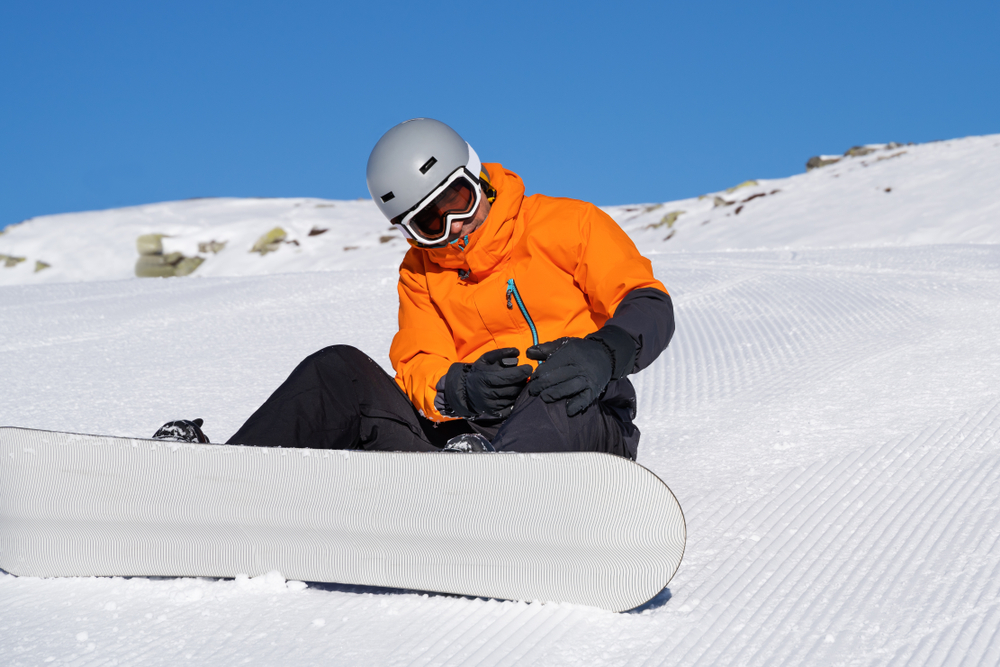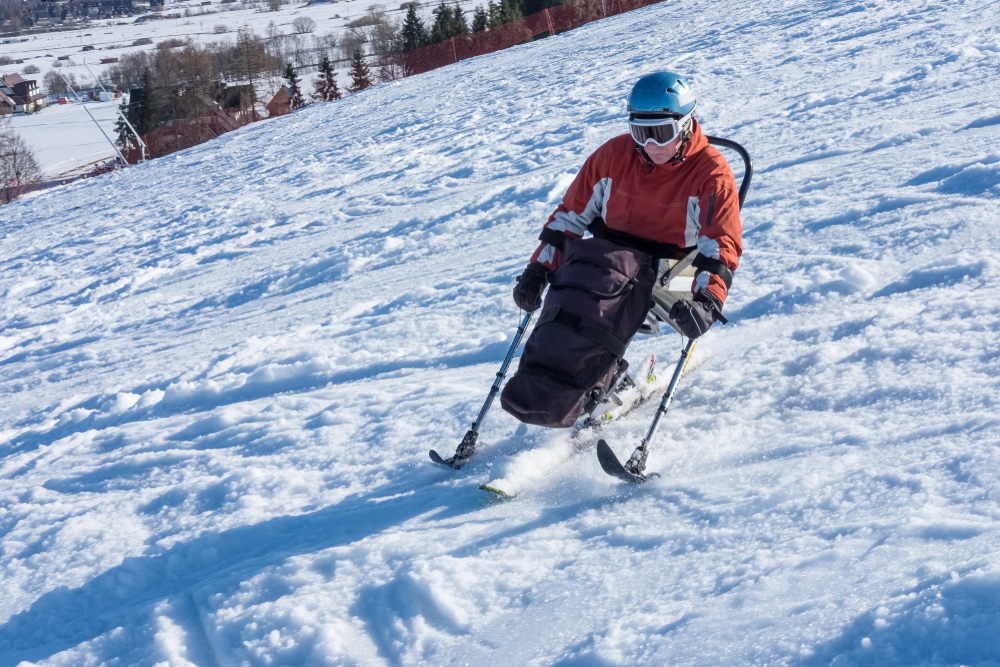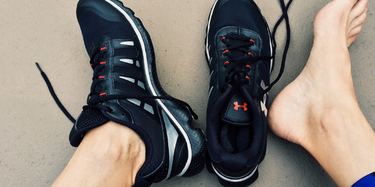Make an Appointment
Both cold and heat therapy are widely recognised as useful self-treatment options to reduce pain. Despite this, there is still a significant amount of confusion on when to ice, when to heat and when it’s best to do nothing.
In this blog, we’re going through everything you need to know about heat vs cold therapy for injuries… when to use it (and when not to use it), how you should use each for the best results and when to seek medical help.
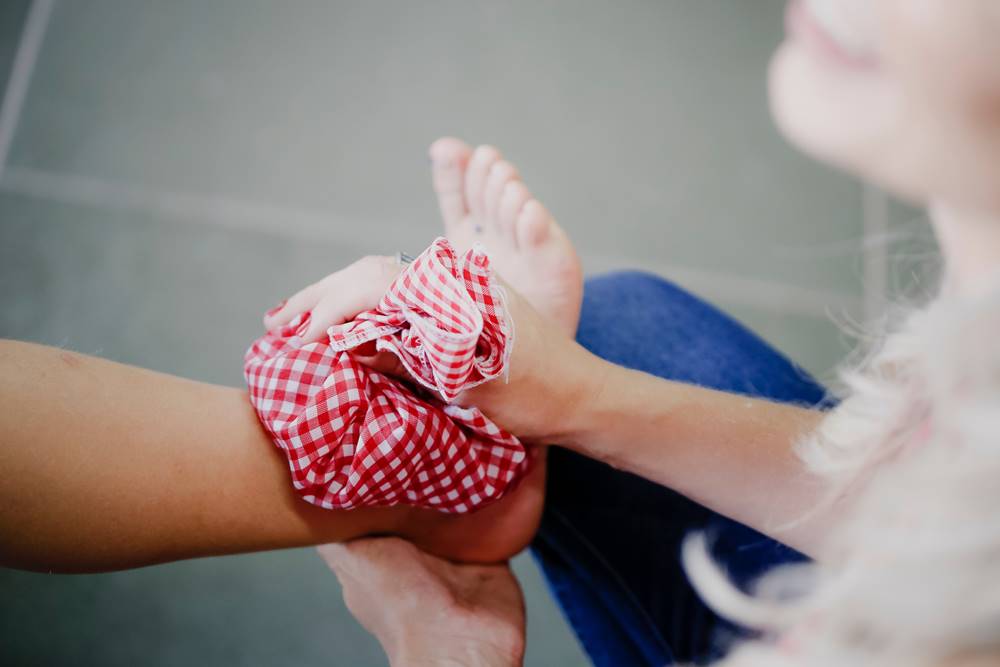
Heat vs Cold Therapy: What’s the theory behind it
The purpose of cold and heat therapy is to take advantage of our body’s natural reaction to adapt to changes in temperature and regulate blood flow.
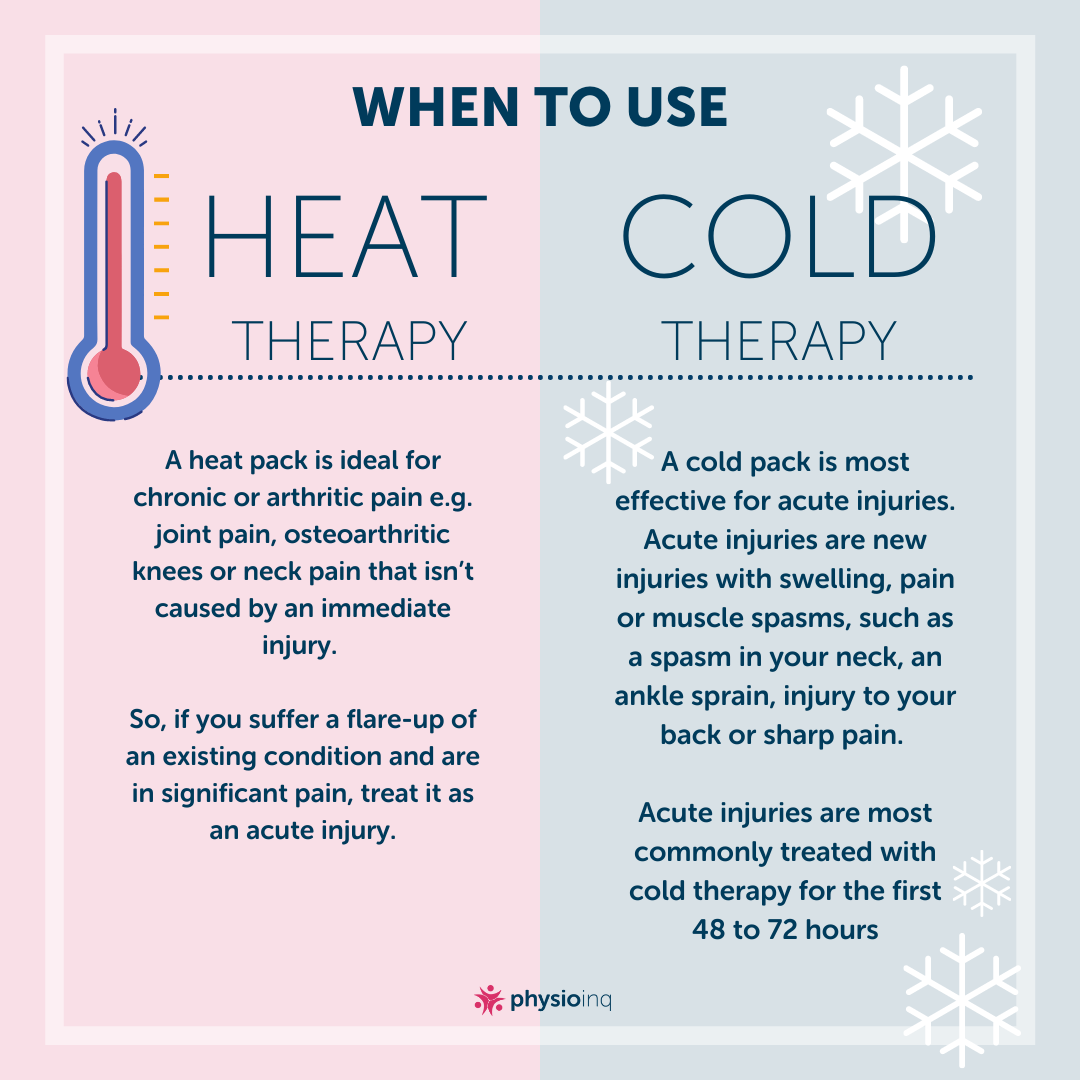
Heat vs Cold Therapy: Why use a cold pack?
There are a few reasons to use a cold pack as cold therapy for an injury:
- Cold packs reduce circulation to the area by constricting the blood vessels which will help with swelling and inflammation.
- 25 minutes after the cold pack is applied excess fluid through the lymphatic system is removed.
- If you’re experiencing sharp or acute pain, the cold provides a numbing sensation that will alleviate some of the discomfort.
In short, cold therapy not only reduces pain but also aids in the healing process by restricting blood flow to reduce swelling and inflammation.
When Should I Use a Cold Pack for Injury Management?
A cold pack is most effective for acute injuries. Acute injuries are new injuries with swelling, pain or muscle spasms, such as a spasm in your neck, an ankle sprain, injury to your back or sharp pain.
Acute injuries are most commonly treated with cold therapy for the first 48 to 72 hours.
How to Use a Cold Pack To Treat An Injury
- Apply a cold pack to the painful area for 15 to 20 minutes. If you are using frozen peas, or loose ice wrap them in a wet towel or cloth. (A dry cloth decreases the effectiveness).
- Repeat the application of cold therapy every two hours.
- Stop after 48 to 72 hours. It is always recommended that you see a doctor or health care professional for injuries or pain.
Note: If a cold pack is applied for too long, the ice can burn especially over areas like the ankle that only has a thin layer of skin. If there is any pain caused by the cold, remove the pack immediately.
Heat vs Cold Therapy: Why use a heat pack?
There are also good reasons to use a heat pack as heat therapy for an injury, these include:
- Heat will increase local circulation by dilating the blood vessels. The increased oxygen and nutrients are essential for cell repair.
- If you are experiencing muscle spasms, it will help relax this area and allow tissues to be stretched more easily.
- It is an effective way to soothe pain, especially chronic pain.
However, heat therapy can also exacerbate swelling and inflammation and may be potentially harmful to acute injuries which is why deciphering between heat vs cold therapy for injuries is so important.
When Should I Use a Heat Pack for Injury Management?
A heat pack is ideal for chronic or arthritic pain e.g. joint pain, osteoarthritic knees or neck pain that isn’t caused by an immediate injury.
So, if you suffer a flare-up of an existing condition and are in significant pain, treat it as an acute injury.
How to Use a Heat Pack To Treat An Injury
- If you’re using a heat wheat pack, check the heating instructions before placing it in the microwave.
- Once heated, wait for 3 to 5 minutes and test the temperature on a person who is not injured.
- Apply the heat pack to the affected area for 15 to 20 minutes.

Heat vs Cold Therapy for Injuries: Which is better?
When in doubt use cold packs. Cold packs rarely exacerbate a condition in the way that heat can by inducing swelling and inflammation. Keep an eye on the area and if it doesn’t feel right or you experience more pain stop immediately.
Another benefit of opting for cold therapy vs heat therapy is the fact that an ice pack also mimics the effects of heat therapy once the ice is removed. When you remove the ice, your body heats up and creates a warming effect.
In other words, you can get both the healing benefits of cold and heat therapy when you use an ice pack.
In general, cold therapy is best for acute injuries that have recently occurred like a strain or muscle spasm. Heat therapy, on the other hand, is more beneficial for chronic pain from arthritis, for example.
Remember, always be careful applying both heat and cold therapy to an injury. Both can burn the skin if not used safely or for too long at a time.
What’s the next step? Visit your healthcare professional or book an appointment with one of our expert physiotherapists who can help you deal with chronic muscle cramps and more. Contact us today on 1300 731 733 [PLEASE LINK TO A PHONE NUMBER] or make an online booking here.
Our Mobile Physio offers community physiotherapy that’s convenient for Australians nationwide. When you book a mobile physio appointment, you’ll get the physiotherapy you need wherever you are and you’ll never cancel an appointment again!
Date Published: Monday, November 1, 2021
Locate a Mobile Physiotherapy
Service Near me
Get the experience & convinence you deserve to support your or a loved one's allied health needs.
Our Mobile Physiotherapy team are currently serving & taking appointments in the following states and regions in Australia:
Need to get into direct contact with ur Client Services team? We're all ears. Call our team directly on 1300 731 733
